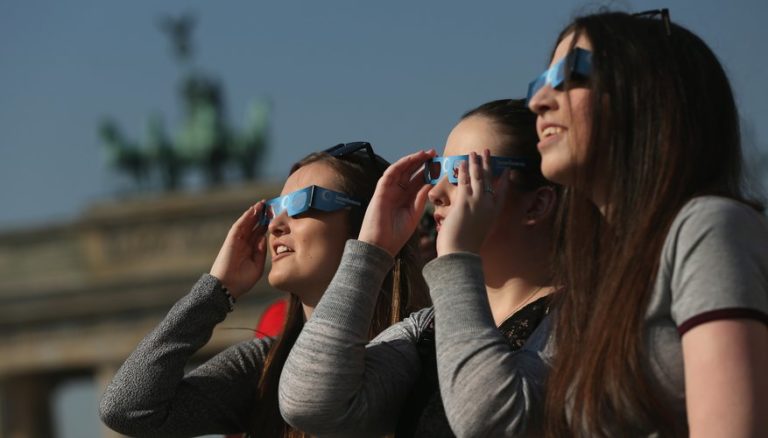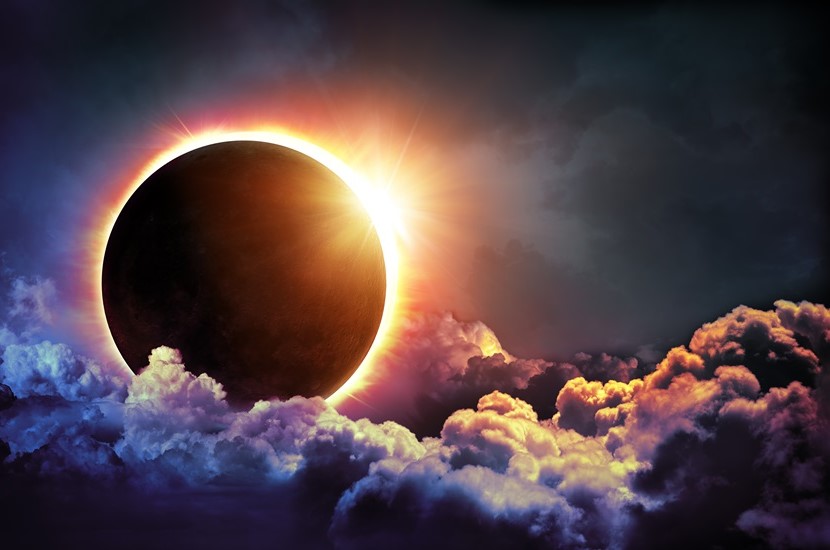On April 8, 2024, the entire United States will see a partial eclipse of the sun. Parts of 15 states, from Texas to Maine, will experience a total solar eclipse.
If you get a chance to see it, make sure to protect your eyes. Looking at the sun without a solar filter, whether through a camera lens or with your bare eyes, can severely damage your eyes and cause vision loss.
Best Place to Watch the Solar Eclipse in 2024
To see a complete eclipse of the sun, you need to be in the right place. The path of totality – where the full eclipse can be viewed – will move across the continent very quickly, in a northeastern direction from Texas to Maine. Plan ahead for where you want to be. You may want a backup plan in case weather gets in the way of your view of the sky.
Areas outside the path of totality will have a partial eclipse. In these areas, the sun will only be partially blocked even at the peak of the eclipse. In those areas, there is no safe time to look at the sun with the naked eye. You must protect your eyes while watching the entire eclipse.
Three Safe Ways to Watch the Solar Eclipse
Looking directly at the sun during most parts of an eclipse can permanently damage your vision or blind you. The only time it is safe to look directly at the sun is when it is completely covered by the moon during the totality phase of an eclipse. During all other times, you could damage your retina, possibly causing blindness.
Here are three safe ways to watch the eclipse:
1. Wear eclipse glasses with certified solar filters
Sunglasses, even very dark ones, are not enough to protect your vision if you look at the sun. Homemade filters are also a bad idea and will not protect your eyes. Plan ahead and obtain eclipse glasses or hand-held solar viewers. These products contain a solar filter that must meet a very specific worldwide standard known as ISO 12312-2. This filter is the only way to truly protect your eyes from the sun’s powerful rays.
The American Astronomical Society has a list of companies that supply eclipse glasses and solar viewers. They also have guidance on how to make sure your eclipse glasses are safe and legit.
2. Make a pinhole viewer to watch the eclipse indirectly
A safer and easier way to see the eclipse is through a pinhole projection or video display.
A pinhole viewer lets you project an image of the sun onto another surface, like paper, a wall or pavement. The image of the sun is safe to look at throughout the eclipse. Learn how to make a pinhole projector or shop for one of these safe-viewing devices.
3. View a live stream of the eclipse
NASA will have a live stream of the solar eclipse. Consider watching the eclipse online or find an event at a local planetarium, science center or club where you know the right safety measures have been taken.

The Dangers of Unprotected Viewing
The sun emits intense ultraviolet (UV) radiation, which can harm the delicate tissues of the eyes when viewed directly. During a solar eclipse, the moon only partially covers the sun, allowing harmful UV rays to penetrate the Earth’s atmosphere and reach our eyes. Without proper protection, looking at the sun during an eclipse can result in solar retinopathy, a condition characterized by damage to the retina due to exposure to bright light.
How do I know if I damaged my eyes during the solar eclipse?
If your eyes feel a little funny after an eclipse, it may not be a sign of solar retinopathy. Damage from the eclipse is unlikely to cause pain or discomfort in your eyes because the retina does not have any pain nerves. Instead, you would notice visual symptoms within four to six hours. But some may notice symptoms after 12 hours.
What are the symptoms of eye damage from a solar eclipse?
If you are concerned that you may have sustained damage, here are some symptoms to look out for:
- Blurry vision
- Headache
- A blind spot in your central vision in one or both eyes
- Increased sensitivity to light
- Distorted vision, in which a straight line looks bent, or a door jamb looks curvy
- Changes in the way you see color, known as “dyschromatopsia”
How is solar retinopathy treated?
There is no treatment for solar retinopathy. But it is important to see an eye doctor if you experience difficulties with your vision. We will take an OCT scan of the eye to see the extent of any damage. Many people recover after three to six months, but some will suffer from permanent vision loss, in the form of a small blind spot and distortion.
The eclipse is a breathtaking natural spectacle that captivates observers around the world. However, it’s crucial to prioritize eye safety when viewing the event to prevent potential vision damage. By following these tips and using certified solar viewing glasses or other safe viewing methods, you can experience the eclipse safely and protect your eyes for years to come. So, get ready to witness the wonder of the eclipse and enjoy this extraordinary celestial event without putting your vision at risk.
Reach out to the team at Optical Illusions today to evaluate your eye health and learn more ways to protect your eyes!



